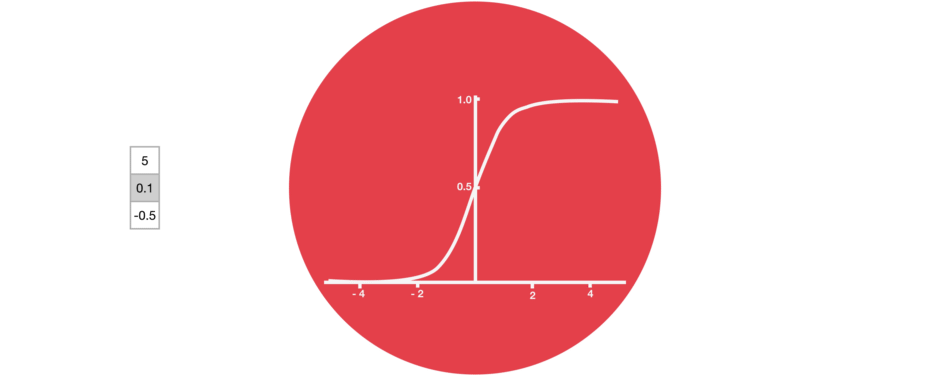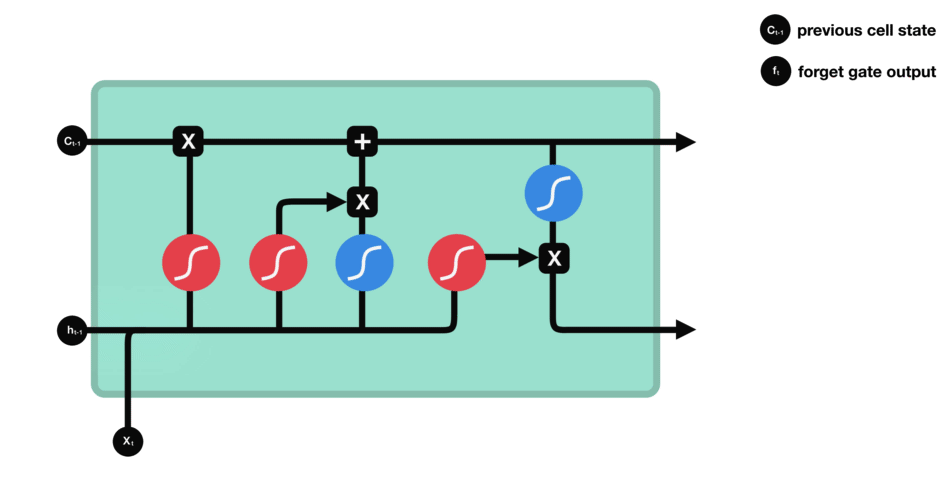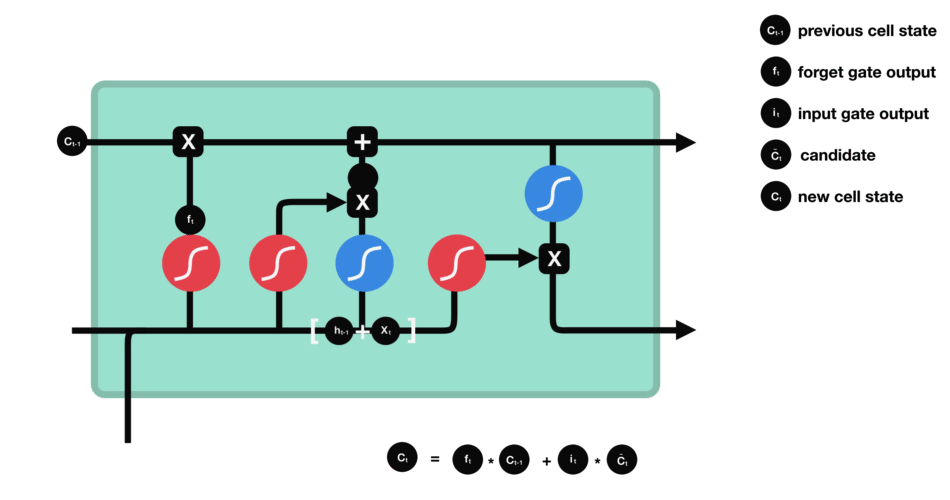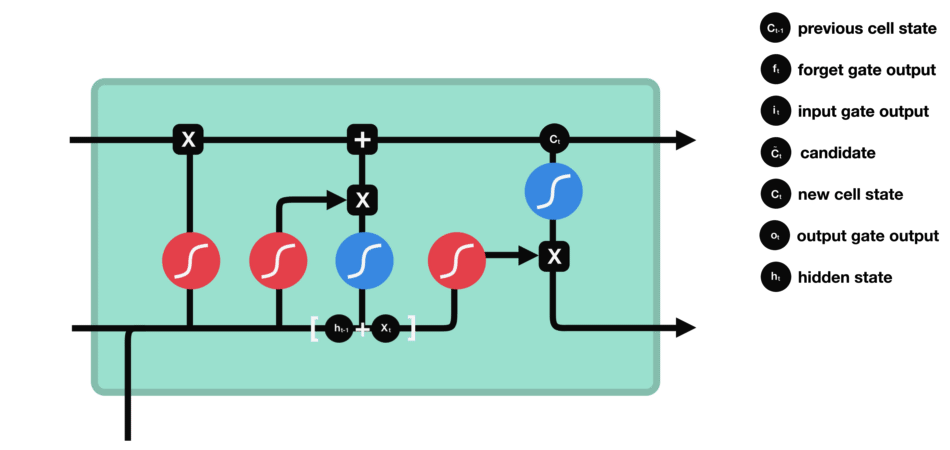Describing the LSTM Model
- An LSTM is a type of RNN
- An LSTM mitigates the issue with vanishing and exploding gradients by ensuring back-propagated gradients are unchanged
- It is designed to handle entire sequences of data by learning when to remember and forget previous information
-
An LSTM consists of components:
- A cell state (sometimes called memory)
- A forget gate
- An input gate
- An output gate
Summarizing the Four Components of an LSTM
-
Cell states
- They represent previous information
- Roughly, the hidden state represents short-term memory, whereas the cell state represents long-term memory
- More accurately, the hidden state is used for making predictions, whereas the cell state is used as memory
-
Forget gates
- They decide what is relevant to keep from previous information
- Specifically, they represent the process of filtering out any unrelated information from the previous information
-
Input gates
- They decide what is relevant to add from the new information
- Specifically, they represent the process of computing new information based on current and previous information
-
Output gates
- They decide what the next hidden state should be
- Specifically, they represent the process of outputting the filtered and calculated current information
Illustrating the Components of an LSTM
- Suppose we received a phone call from a friend
- When our phone rings, we may be thinking about any number of thoughts already
- These thoughts could be related or unrelated to our friend
- This state of thinking represents our cell state
- In other words, the cell state represents our previous thoughts
- When we answer the call, we'll put aside any unrelated thoughts while retaining anything we meant to talk to our friend about
- This process represents the forget gate
- In other words, the forget gate represents filtering out only relevant thoughts at the beginning of the conversation
- As the conversation progresses, we'll take in and interpret all of the new information from our friend
- As our friend speaks, we'll be thinking of an appropriate response
- This process represents the input gate
- In other words, the input gate represents thinking of a response
- Once we decide what to say next, we'll begin to speak to our friend
- This process represents the output gate
- In other words, the output gate represents our actual response
Defining the Architecture of an LSTM
- The general architecture for an LSTM is depicted below:
-
Again, the general architecture consists of the components:
- A cell state
- A forget gate
- An input gate
- An output gate
Illustrating the Use of Gates in an LSTM
-
Here, the activation function is used to regulate (or standardize) values flowing through the network
- Specifically, it squishes values between and
- The frequent use of functions throughout the cell helps reduce the problem with vanishing and exploding gradients


- A vanilla RNN uses much fewer computational resources compared to an LSTM and a GRU
-
The cell state acts as a pathway used for transporting relevant information between cells
- It can be thought of as the memory between previous cells
- Implying, it can carry relevant information from previous cells
- This is where its long-term memory comes from
- Gates learn what information is relevant to keep or forget at different points in the network
-
Specifically, gates are used for
- Adding information to the cell state of previous cells
- Removing information from the cell state of previous cells
-
A gate contains a activation functions
- Sigmoid functions squish values between and
- This function is useful for keeping and forgetting data
- If the output is , then values will be forgotten
- Conversely, if the output is , then values are kept

Illustrating the Forget Gate in an LSTM
-
A forget gate decides what information should be kept or forgotten
- Here, a sigmoid function receives information from the previous hidden state and information from the current input
- The output values are between and
- Meaning, values closer to are forgotten, whereas values closer to are kept
- This is where its short-term memory comes from

Illustrating the Input Gate in an LSTM
-
The input gate is used for updating the cell state
- Here, a sigmoid function receives information from the previous hidden state and information from the current input
- The output values are between and
- If the output is , then values will be forgotten
- Conversely, if the output is , then values are kept
- Essentially, the sigmoid function determines which information to keep from the output of the function

Illustrating the Cell State Update in an LSTM
-
The cell state is updated based on the output of the forget gate and the output of the input gate
- The forget gate determines whether values should be forgotten
- The input gate determines what values should be updated
- The forget gate can forget values from the cell state if the output is
- Similarly, the input gate can forget values from the current input if the output is

Illustrating the Output Gate in an LSTM
-
The output gate decides what the next hidden state should be
- Recall, a hidden state contains information from previous inputs
- The hidden state is also used for making predictions
- Here, a function receives information from the previous hidden state and the current input
- Then, a function receives information from the newly modified cell state
- The output from the and functions are multiplied to decide what information the hidden state should carry
- The output of this multiplication becomes the hidden state
- The new cell state and the new hidden is then carried over to the next time cell

Applications of an LSTM
- Next-character predictions
- Chatbots
- Image captioning
- Music composition
- Speech recognition
References
Previous
Next